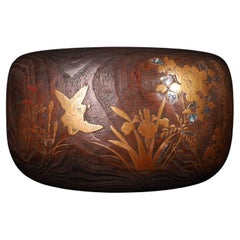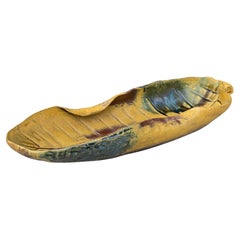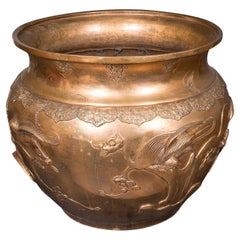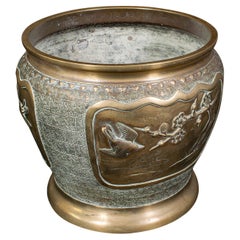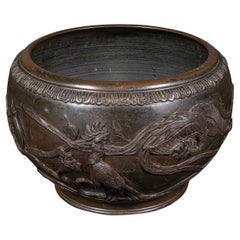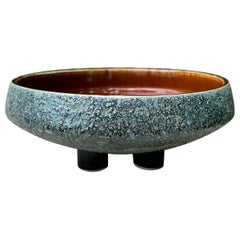Japanese Planters, Cachepots and Jardinières
Early 20th Century Taisho Japanese Planters, Cachepots and Jardinières
Copper
20th Century Mid-Century Modern Japanese Planters, Cachepots and Jardinières
Ceramic
1880s Meiji Antique Japanese Planters, Cachepots and Jardinières
Bronze
1850s Edo Antique Japanese Planters, Cachepots and Jardinières
Bronze
Mid-19th Century Victorian Antique Japanese Planters, Cachepots and Jardinières
Bronze
20th Century Mid-Century Modern Japanese Planters, Cachepots and Jardinières
Ceramic
Early 20th Century Japanese Planters, Cachepots and Jardinières
Porcelain
19th Century Other Antique Japanese Planters, Cachepots and Jardinières
Ceramic
20th Century Mid-Century Modern Japanese Planters, Cachepots and Jardinières
Ceramic
1970s Modern Vintage Japanese Planters, Cachepots and Jardinières
Ceramic
Early 20th Century Taisho Japanese Planters, Cachepots and Jardinières
Porcelain
Late 19th Century Meiji Antique Japanese Planters, Cachepots and Jardinières
Bronze
1980s Mid-Century Modern Vintage Japanese Planters, Cachepots and Jardinières
Wood, Art Glass
19th Century Meiji Antique Japanese Planters, Cachepots and Jardinières
Enamel, Copper
Late 19th Century Meiji Antique Japanese Planters, Cachepots and Jardinières
Brass, Enamel
Mid-19th Century Victorian Antique Japanese Planters, Cachepots and Jardinières
Bronze
Late 19th Century Victorian Antique Japanese Planters, Cachepots and Jardinières
Brass
19th Century Antique Japanese Planters, Cachepots and Jardinières
Copper
Early 19th Century Antique Japanese Planters, Cachepots and Jardinières
Terracotta, Paper
1920s Art Deco Vintage Japanese Planters, Cachepots and Jardinières
Ceramic
Late 19th Century Antique Japanese Planters, Cachepots and Jardinières
Porcelain
19th Century Edo Antique Japanese Planters, Cachepots and Jardinières
Porcelain
2010s Modern Japanese Planters, Cachepots and Jardinières
Iron
1920s Vintage Japanese Planters, Cachepots and Jardinières
Gold
Early 19th Century Antique Japanese Planters, Cachepots and Jardinières
Terracotta, Paper
19th Century Antique Japanese Planters, Cachepots and Jardinières
Bronze
19th Century Antique Japanese Planters, Cachepots and Jardinières
Terracotta
Late 19th Century Meiji Antique Japanese Planters, Cachepots and Jardinières
Enamel, Brass
19th Century Meiji Antique Japanese Planters, Cachepots and Jardinières
Porcelain
1980s Mid-Century Modern Vintage Japanese Planters, Cachepots and Jardinières
Art Glass, Ceramic
Late 19th Century Antique Japanese Planters, Cachepots and Jardinières
Brass
19th Century Meiji Antique Japanese Planters, Cachepots and Jardinières
Enamel
1950s Modern Vintage Japanese Planters, Cachepots and Jardinières
Ceramic, Porcelain
Late 19th Century Meiji Antique Japanese Planters, Cachepots and Jardinières
Copper, Enamel
1880s Victorian Antique Japanese Planters, Cachepots and Jardinières
Porcelain
19th Century Meiji Antique Japanese Planters, Cachepots and Jardinières
Bronze
Late 19th Century Antique Japanese Planters, Cachepots and Jardinières
Porcelain
Mid-19th Century Japonisme Antique Japanese Planters, Cachepots and Jardinières
Bronze
17th Century Meiji Antique Japanese Planters, Cachepots and Jardinières
Porcelain
Late 19th Century Victorian Antique Japanese Planters, Cachepots and Jardinières
Wood
19th Century Meiji Antique Japanese Planters, Cachepots and Jardinières
Porcelain
19th Century Meiji Antique Japanese Planters, Cachepots and Jardinières
Porcelain
20th Century Meiji Japanese Planters, Cachepots and Jardinières
Bronze
1960s Mid-Century Modern Vintage Japanese Planters, Cachepots and Jardinières
Ceramic
1920s Vintage Japanese Planters, Cachepots and Jardinières
Pottery
Early 20th Century Anglo-Japanese Japanese Planters, Cachepots and Jardinières
Paper
Early 1900s Meiji Antique Japanese Planters, Cachepots and Jardinières
Bronze
1890s Japonisme Antique Japanese Planters, Cachepots and Jardinières
Bronze
19th Century Antique Japanese Planters, Cachepots and Jardinières
Porcelain
Early 20th Century Japanese Planters, Cachepots and Jardinières
Ceramic
20th Century Mid-Century Modern Japanese Planters, Cachepots and Jardinières
Ceramic
1980s Mid-Century Modern Vintage Japanese Planters, Cachepots and Jardinières
Art Glass, Ceramic
18th Century Meiji Antique Japanese Planters, Cachepots and Jardinières
Porcelain
19th Century Meiji Antique Japanese Planters, Cachepots and Jardinières
Porcelain
18th Century Edo Antique Japanese Planters, Cachepots and Jardinières
Porcelain
Late 19th Century Antique Japanese Planters, Cachepots and Jardinières
Porcelain
Mid-19th Century Edo Antique Japanese Planters, Cachepots and Jardinières
Bronze
Early 20th Century Anglo-Japanese Japanese Planters, Cachepots and Jardinières
Brass
Mid-19th Century Edo Antique Japanese Planters, Cachepots and Jardinières
Metal, Bronze, Copper
Mid-20th Century Japanese Planters, Cachepots and Jardinières
Bronze
Read More
8 Ways to Breathe New Life into a Space with Plants
The pair behind the Instagram account @houseplantclub share their tips for making any room of the house gloriously green.
10 On-Point Vessels for Flaunting Your Houseplants and Bouquets
Whether you're a genius gardener or have your florist on speed dial, every stem in your home deserves the best.
How to Decorate with Plants
The vegetation in these six living rooms is lush yet discreet enough that they won't be mistaken for greenhouses.
